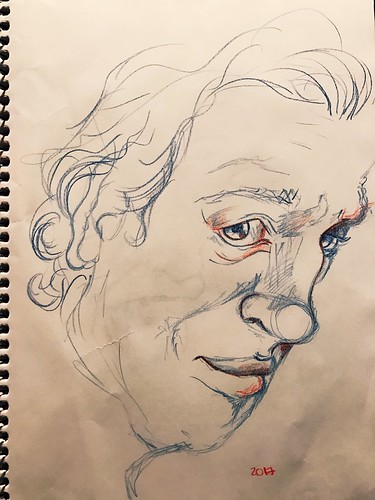this purpose, we performed within a next step a rat aortic ring assay. This strategy is performed with endothelial cells of freshly isolated aortic rings, that are not pre-selected by passaging and aren’t in a proliferative state [48]. In addition, the vessels expanding out in the rings exhibit a histomorphology, that is related to newly formed microvessels in situ, because they also recruit perivascular smooth muscle cells and pericytes [49]. As a result,  the aortic ring assay is regarded as to mimic closely in vivo angiogenesis. Applying this assay, we could show that geraniol inhibits the sprouting activity of microvessels, resulting inside a drastically lowered sprout region when 216699-35-3 compared to controls. According to our in vitro results, we finally assessed the action of geraniol on tumor angiogenesis inside the dorsal skinfold chamber model of BALB/c mice. The mice were everyday treated with oral gavage of geraniol at a dose of 200mg/kg, simply because this dose has previously been shown to proficiently suppress tumor incidence inside a rat model of renal carcinogenesis [10]. Moreover, it was nicely tolerated through long-term remedy more than 16 weeks and in some cases induced the downregulation of serum toxicity markers [10]. In line with these findings, we could not detect any adjustments inside the behaviour with the animals when when compared with vehicle-treated controls. They exhibited regular feeding, cleaning and sleeping habits. Therefore, extreme unwanted effects of geraniol therapy is usually excluded inside the present study. Nonetheless, as any other systemic anti-angiogenic therapy, geraniol treatment may perhaps have an effect on physiological angiogenesis inside the female reproductive program or for the duration of regenerative processes, for instance wound healing. Consequently, it will be essential to clarify the safety profile of this compound in a lot more detail in future toxicity studies.
the aortic ring assay is regarded as to mimic closely in vivo angiogenesis. Applying this assay, we could show that geraniol inhibits the sprouting activity of microvessels, resulting inside a drastically lowered sprout region when 216699-35-3 compared to controls. According to our in vitro results, we finally assessed the action of geraniol on tumor angiogenesis inside the dorsal skinfold chamber model of BALB/c mice. The mice were everyday treated with oral gavage of geraniol at a dose of 200mg/kg, simply because this dose has previously been shown to proficiently suppress tumor incidence inside a rat model of renal carcinogenesis [10]. Moreover, it was nicely tolerated through long-term remedy more than 16 weeks and in some cases induced the downregulation of serum toxicity markers [10]. In line with these findings, we could not detect any adjustments inside the behaviour with the animals when when compared with vehicle-treated controls. They exhibited regular feeding, cleaning and sleeping habits. Therefore, extreme unwanted effects of geraniol therapy is usually excluded inside the present study. Nonetheless, as any other systemic anti-angiogenic therapy, geraniol treatment may perhaps have an effect on physiological angiogenesis inside the female reproductive program or for the duration of regenerative processes, for instance wound healing. Consequently, it will be essential to clarify the safety profile of this compound in a lot more detail in future toxicity studies.
Geraniol action on vascular sprouting. A-D: Phase-contrast microscopic pictures of rat aortic rings with vascular sprouting (borders marked by broken line) upon six days of remedy with car (A), 100M (B), 200M (C) or 400M geraniol (D). Scale bars: 700m. E: Sprout area (mm2) in the outer aortic sprouting, as assessed by phase-contrast microscopy and computer-assisted image analysis. The aortic rings have been exposed to car (manage; n = 8) or escalating concentrations of geraniol (10000M; n = eight) for six days. Suggests SEM.
Dorsal skinfold chamber model for the in vivo evaluation of tumor angiogenesis. A: BALB/c mouse using a dorsal skinfold chamber (weight: ~2g). B: Observation window of a dorsal skinfold chamber directly following transplantation of a CT26 tumor cell spheroid (border marked by broken line). C, D: Intravital fluorescence microscopy with the tumor cell spheroid (border marked by broken line) in B. Since the cell nuclei from the spheroid have been stained 17764671 with the fluorescent dye Hoechst 33342 just before transplantation, the implant can effortlessly be differentiated in the non-stained surrounding host tissue of the chamber employing ultraviolet light epi-illumination (C). Blue light epi-illumination with the identical area of interest as in C with contrast enhancement by intravascular staining of plasma with 5% FITC-labeled dextran 150,000 i.v. makes it possible for the visualization on the microvasculature surrounding the spheroid (D). Scale bars: A = 10mm; B = 1.4mm; C, D = 250m.
Geraniol action on tumor vascularization and growth. A, B: Intravital fluorescence microscopic photos of your newly developed microvascular network within CT26 tumors at day 14 following implantation in to the dorsal s
